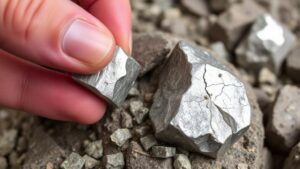Techniques for Sampling and Assaying High Sulfide Ore Deposits
Techniques for Sampling and Assaying High Sulfide Ore Deposits
High sulfide ore deposits present unique challenges for geologists and mining engineers, particularly in the realms of sampling and assaying. These ores contain significant quantities of sulfide minerals, which can complicate traditional analysis methods due to their reactivity and the presence of other minerals. This article aims to explore the techniques used in the sampling and assaying of high sulfide ore deposits, backed by concrete examples and statistical data.
Understanding High Sulfide Ore Deposits
High sulfide ore deposits are primarily composed of sulfide minerals such as pyrite, chalcopyrite, and galena. e ores are typically found in environments associated with subduction zones, hydrothermal systems, and various geological formations. Their high metal content, especially in copper, lead, and zinc, makes them economically valuable. But, effective sampling and assaying are critical for optimizing resource recovery and minimizing economic risks.
Sampling Techniques
Sampling is the process of selecting a representative subset of material for analysis. In high sulfide ore deposits, effective sampling techniques include:
- Drilling Methods: Core drilling is the most common technique for sampling high sulfide ores. The core samples can provide valuable geologic data and facilitate accurate estimation of ore grade.
- Split Sampling: This involves dividing bulk samples into smaller, representative portions. This method helps mitigate the risk of sampling error, particularly in heterogeneous materials.
- Channel Sampling: Ideal for exposed ore on surfaces, channel sampling involves cutting a continuous sample from the deposit. This method helps in evaluating lateral variations in mineral content.
Real-world case studies illustrate the importance of these methods. For example, at the Grasberg mine in Indonesia, comprehensive core drilling has allowed for precise mapping of ore bodies, ensuring efficient resource extraction.
Assaying Techniques
Assaying is the analytical process used to determine the composition and grade of mineral samples. The following techniques are commonly employed for high sulfide ore deposits:
- AAS (Atomic Absorption Spectroscopy): AAS is effective for trace metal analysis, allowing for the quantification of elements like gold and silver in sulfide ores.
- ICP-MS (Inductively Coupled Plasma Mass Spectrometry): This technique is favored for its sensitivity and ability to detect low concentrations of metals, making it an excellent choice for high sulfide ores.
- Fire Assaying: Particularly relevant for precious metals, fire assaying involves heating a sample with flux to separate the metals from the matrix. This method is renowned for its accuracy in precious metal quantification.
For example, the fire assaying technique is widely used in South Americas gold mining sector, where high sulfide content can lead to excessive losses if inappropriate assaying methods are used.
Challenges in Sampling and Assaying
Several challenges can arise during the sampling and assaying of high sulfide ores:
- Reactivity of Sulfides: Sulfide minerals can oxidize upon exposure to air, potentially altering assay results. Proper handling and storage of samples are essential to minimize this risk.
- Heterogeneity: High sulfide ores can vary significantly in composition even over short distances, necessitating thorough sampling protocols to ensure representativity.
- Matrix Effects: Interferences from other minerals can affect the assay results, complicating the interpretation of the data.
Conclusion and Actionable Takeaways
To wrap up, the effective sampling and assaying of high sulfide ore deposits are crucial for successful mining operations. Utilizing advanced techniques such as core drilling, AAS, and ICP-MS, while also addressing challenges like sample reactivity and heterogeneity, will contribute to more accurate estimations of ore grades. Stakeholders in the mining industry should prioritize proper training in these methodologies and remain informed of technological advancements to enhance their sampling and assaying protocols.
For further improvement, companies should consider implementing automated sampling systems and modern data analytics tools to streamline their operations and enhance accuracy in resource evaluations.


